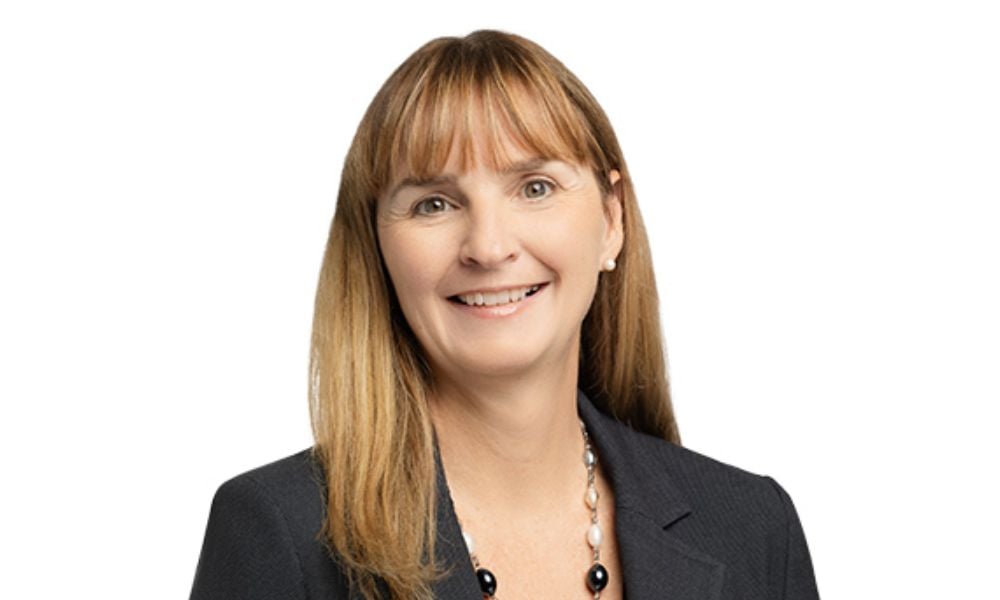
iA Financial is embedding growth into the everyday

When Stéphanie Butt Thibodeau joined iA Financial three years ago, she and the executive team put one ambition at the center of the organization’s strategy: to become a learning organization.
“We thought that was important because we know that learning organizations are more agile; they're more resilient. We know that employees want to grow and develop,” she says.
With an ambitious corporate growth strategy, the team at iA Financial knew they needed their people to grow too.
“Making sure that our people are adapting to better support that growth ambition was important to us,” she says. “So, it's one of our four strategic priorities as part of our corporate plan.”
But what does becoming a learning organization actually look like in practice?
“It really is about helping our talent to develop, personally and professionally,” she explains. “It's about creating a safe, inclusive environment where everyone can be their authentic self, feel safe coming to work or where our people are able to really share their knowledge and experience to help each other grow.”
The idea is not to confine learning to formal training modules or annual compliance courses but to embed learning into all aspects of the organization in an accessible way.
“For us, learning is not an HR thing, a course that you do once a year, that you sign up for and check you're done,” she says. “It's really in the day-toflow of work.”
That flow includes a concept the company calls “learning dates,” which started out as an experiment during a management meeting and quickly gained momentum.
“It’s about bringing people together on a common topic of interest, setting the stage for a discussion, and then learning from each other on that topic,” Butt Thibodeau says.
The format is simple: small, drop-in style group discussions – sometimes virtual, sometimes in-person – built around themes that resonate with employees and leaders. Topics range from courageous leadership and giving feedback to performance development plans and recognition.
“Essentially, any employee can submit a topic, and it can be launched as a learning date,” she explains.
What’s been striking is how the sessions have helped forge deeper, human connections.
“Often they're discovering colleagues or things about their colleagues that they didn't know before,” she says. “They come away with practical tips and tricks that they can apply in their day-to-day work.”
Beyond anecdotal engagement, the company is putting structure behind the initiative. A Foundations Leadership Program, which is mandatory for all leaders, includes specific learning agility tracks.
There’s also a Learning Council composed of vice presidents from across the business lines, designed to ensure that learning strategy stays grounded in business realities.
“We meet with the council two or three times a year to say, ‘here's what we're working on,’ and ‘what are the challenges that you're facing as a business?’” Butt Thibodeau explains.
To track the progress that comes from this structure, iA Financial launched a Learning Index.
“We've developed a series of questions that we've benchmarked with the market and we survey our employees twice a year,” she says. “Our intention is to continue to measure that over the next three to five years to make sure that we're having the impact that we're looking for.”
So far, early indicators are promising, but challenges still remain.
“The one that's starting to move up is the manager coaching and feedback; we put that in performance work plans this year, and we are starting to see sort of an upward movement in that score,” she says. “The sharing best practices and knowledge is one that we want to continue to see moving that hasn't moved as much as we would have liked.”
The pace of business has also made it hard for some employees to prioritize learning. That’s why the emphasis remains on learning that fits seamlessly into day-to-day work, not something bolted on as an afterthought. Leaders, meanwhile, are expected to lead by example.
“It's really about setting the tone, creating the right conditions and making sure that employees are comfortable sharing their ideas,” she says. “They're being humble and open about the challenges that they're facing and what they're experiencing.”
To further prioritise learning, even personal development outside work is supported.
“Our employees have personal development and wellness days that they can take during the year,” she says. “If someone has a personal interest in they can take a personal development day to focus on their learning passion outside of work.”
Technology is also part of that toolkit. With access to 40,000 pieces of content via the Skillsoft platform, employees can tailor their own learning paths. New resources around artificial intelligence are helping employees prepare for what’s next.
For organizations considering the same route, Butt Thibodeau urges patience, discipline and a commitment back with data.
“It's a journey. It doesn't happen overnight; I think you need to really be committed,” she says. “The other advice, I would say, is measure it. Are there differences in our results from each of our different sectors, corporate sectors lines of business? Where do we need to lean in and support?”
But measurement isn’t for measurement’s sake – it’s about accountability.
“My team has been meeting with the leadership teams of each line of business to say, ‘here are your individual results from the survey and how they compare to the overall iA group,’” she says. “So, it's not an HR thing on the side; they have accountability for helping the organization to move forward.